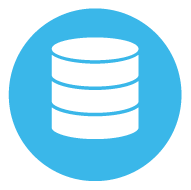
Virtualisation is, simply put, the creation of a virtual version of computer hardware. It allows for a single physical resource (such as storage, memory and networking) or application to be shared among multiple customers at one time. The computing system, known as a virtual machine (VM), contains an OS and application and each VM is completely independent of another. Hypervisor, a software layer, breaks up the VM from the host and places the required resources to the right VM.
One misconception about virtualization is that it slows down the performance of your computer; a theory that has been repeatedly proven to be false. A computer runs slower due to the hard drive, RAM or processor being overworked, all of which won’t be the case with virtualisation. Because virtualisation does not actually consume major resources.
-

Application Virtualisation
Want remote access to your applications? Apply this technique. The server stores all the applications details yet still runs on a local workspace via the internet, which is especially useful if the operator needs to run two different types of the same software.Technologies that process this type of virtualisation are hosted and packaged applications.
-

Network Virtualisation.
Routers, firewalls, VPN’s and workload security can all be created within days due to network virtualisation. It possesses the ability to run multiple virtual networks at once, co-existing together on top of one physical network, lowering the cost of IT infrastructure.
-

Desktop Virtualisation.
This type of virtualization allows the users’ operating system (OS) to be remotely stored on a server in the data center. So, your desktop is accessible from any location and from different computers making it convenient. Other benefits include portability and easy software management (updates and patches).
-

Storage Virtualisation
Storage virtualisation is an array of servers that are managed by a virtual storage system. The servers work akin to worker bees in a hive and allows storage from several sources to be managed and used as a single storehouse. Benefits include smooth operations, consistent performance and continuous suite of advanced functions always.
-

Virtualisation v Cloud Computing
Virtualisation, like Cloud Computing, is one of the most efficient techniques in the technological field. Yet, the two are not interchangeable. Virtualisation enables computing environments to be free from a physical frame, whereas Cloud Computing is a program that enables software & data to be accessed on demand via the internet. They do, however, complement each other. As such, companies can begin by virtualizing their systems before utilizing cloud computing for greater flexibility and remote access.
We have many specialists on-site who are more than happy to further educate you.Let us help your business grow!




